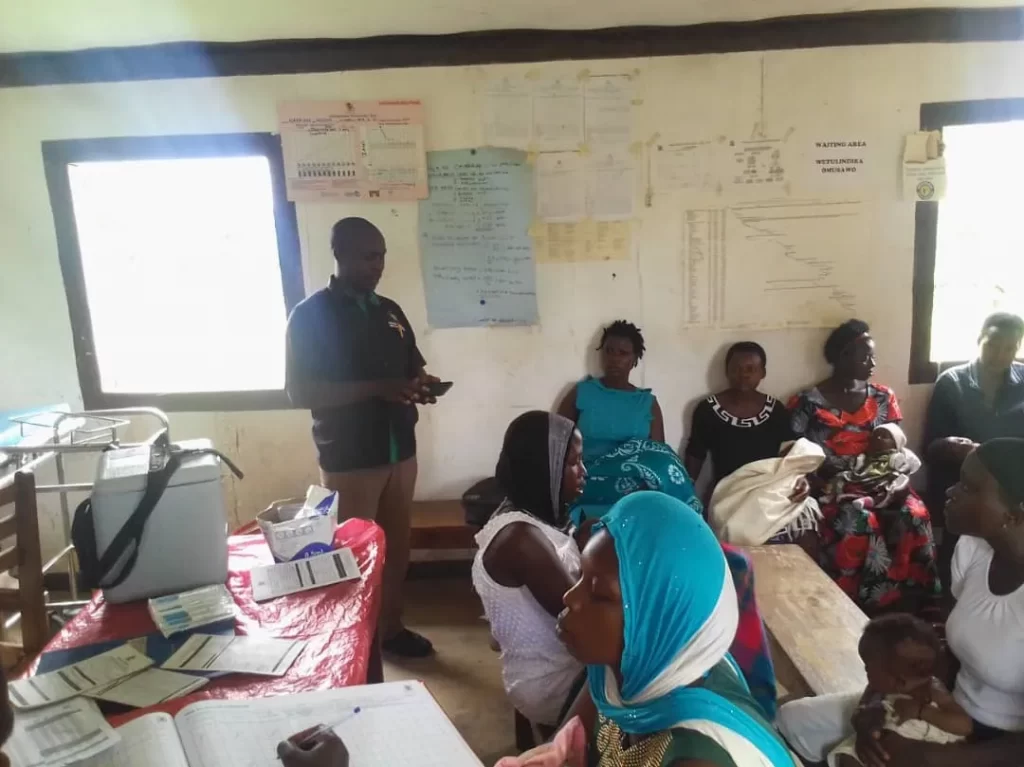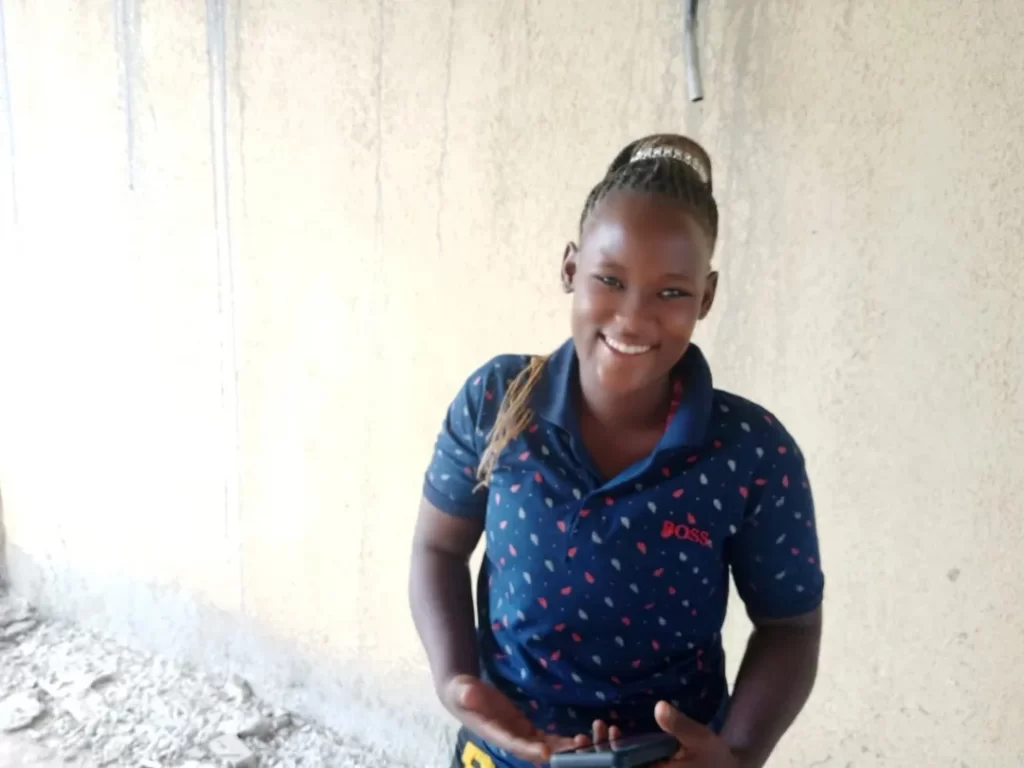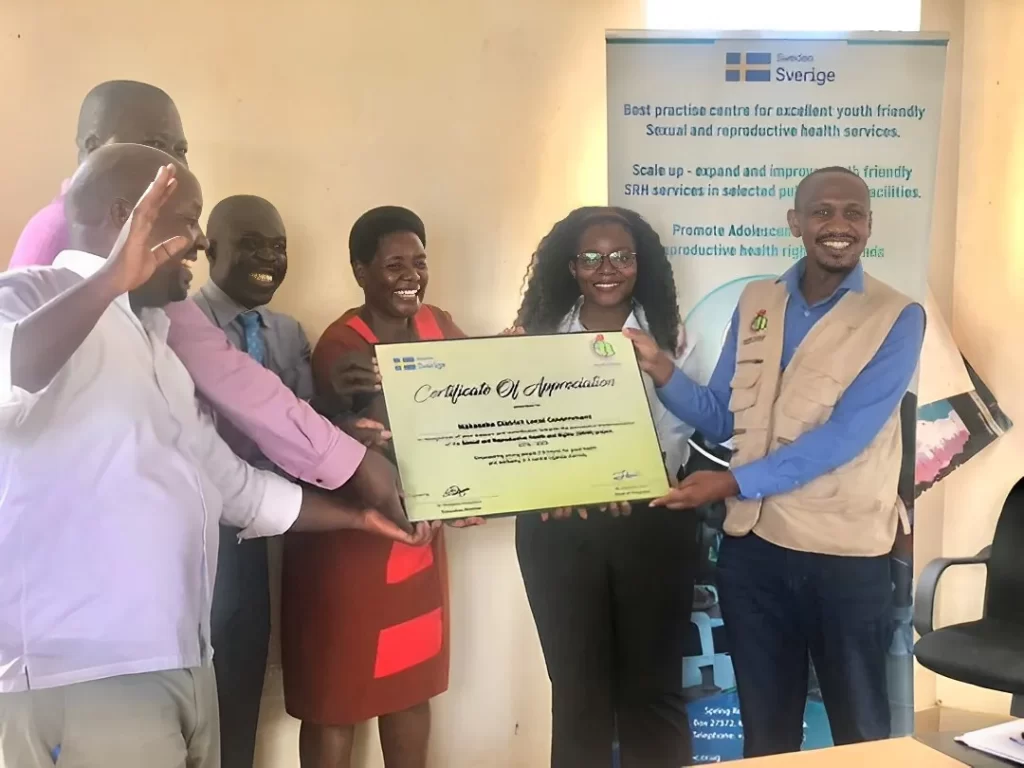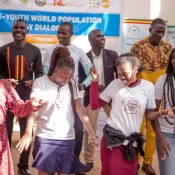Nakaseke peers vow to transform young people’s lives with life planning skills coupled with access to SRHR information and services

By Esther Makula-NTIHC
NAKASEKE – When Ronald Ssempijja joined Kikamulo Health Centre III in Nakaseke district as a peer educator in 2017, he did not know how much impact he would make on the lives of young people. He acquired training on adolescent Sexual Reproductive Health (SRH), and would later empower his peers to live their dreams through life planning skills and livelihood mentorship programs.
“I was taken on by Naguru Teenage Information and Health Centre on 4th April 2017 and trained as a peer educator. At that time, adolescents in my community did not know about the services offered at the newly established youth corner, and some could not access contraceptives, and HIV/AIDS services due to fear of criticism,” he explains.

Ssempijja prides himself in the experience he has gained, and the lives of young people he has touched over the years.
“Currently, many adolescents come to Kikamulo Health facility and confide in me. These often come with challenges such as Sexually Transmitted Infections (STIs), wanting to access condoms and are not comfortable discussing these with health workers. At times, they come and signal me, and I get to know what they want without even asking.”
“I have been able to empower my fellow young people to live purposeful lives, and encouraged them to engage in income-generating activities,” he said.

Similarly, Deborah Namata, a peer educator has been able to increase her household income while providing her peers information on HIV/AIDS, and other Sexually Transmitted Infections at Semuto Health Centre IV.
“I am grateful for the support from the Teenage Centre since I joined in 2021. Currently, I own a snacks business,” she said.
Through the SIDA-funded SRH project, NTIHC has been able to empower young people with SRH information in the communities of the catchment areas of the 32 supported public health facilities in the 9 districts of central Uganda.

Sam Asiimwe, the head of programs at Naguru Teenage Centre noted that throughout the implementation of the project, they have worked with public health facilities to ensure that the Ministry of Health Adolescent SRH guidelines, policies, and service standards are implemented.
Adding, “The project piloted the District Committees on Adolescent Health (DICAHs), which have enhanced multi-sectoral coordination and improved adolescent health services and linkages to other development programs.”
Teenage pregnancy is still a burden in Nakaseke district
According to the Bureau of Statistics (UBOS) 2018, almost a quarter (one in four or 25%) of Ugandan women has given birth by the age of 18.
Frank Mugisha, the Adolescent Health focal person in the district revealed, during a recent DICAH meeting that the burden of teenage pregnancy is still high.
“We are living in a youth bulge, and if pregnancies are not planned, we shall continue to see more challenges among young people such as increased maternal mortalities, criminalities, and Gender-Based Violence among others,” he noted.

The District Health Officer, Dr Simon Ariga commended Naguru Teenage Information and Health Centre for scaling up adolescent-responsive health services at Kikamulo HCIII, Semuto HCIII, and Bidabugya HCIII in the district.
He added, “More resources should target the school health program because we have many young people in school.”
Robert Kaggwa, the district planner noted that through the integration of the youth corners, there will be continuity of youth-friendly services at health facilities.
“We need integration because of the limited resources so that when offering services, it’s a whole package. In our planning, we shall ensure that these services keep running for our young people,” he said.
2 thoughts on “Nakaseke peers vow to transform young people’s lives with life planning skills coupled with access to SRHR information and services”
Add a Comment Cancel reply
Recent Posts
+256800311222
TOLLFREE





The peer approach has greatly improved access to SRH information and services among young people. We should leverage on it for integration of GBV and economic empowerment for better outcomes.
Your work should be every where in Uganda especially in the deep villages because it helps to open the minds of younger people. Once I also attended your educate in Mayuge district continue with that God bless you